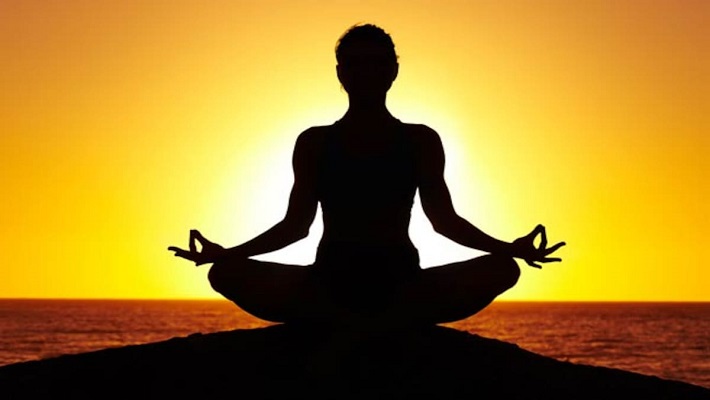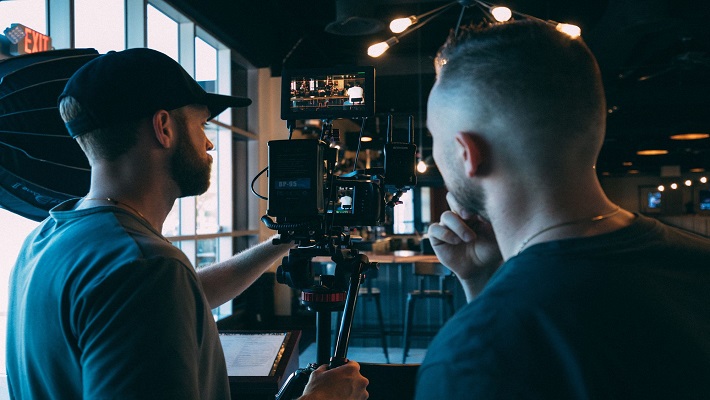
Driven as something fundamental to life, Yoga Asanas, also called yoga poses or yoga postures in English, are something essential in life which makes life easier and flexible. Which can be adopted in an individual's life style to enhance peace of mind, cheerfulness and abundant freshness.
Yoga asanas is a way of ensuring strength, flexibility, stability, mobility and wellness.
Let's have a detailed insight into five effortless yoga postures that ought to be incorporated in your daily morning routine towards driving away laziness and strengthening tranquillity.
- Tadasana
Tadasana, Mountain Pose or Samasthiti is a standing asana in modern yoga as exercise. It is the originator for several other standing asanas. This asana appears in the 1896 Vyayama Dipika, a manual of gymnastics, as part of the "very old" sequence of danda (Sanskrit for "staff" or "stick") exercises.
Steps Involved:
- Stand on a flat ground; your feet should be slightly apart.
- Your hands should be alongside your body.
- Inhale deeply and slowly raise your arms upwards then interlock your fingers.
- Raise your heels and stand on your toes. Your toes should be fanned out a little.
- Feel your body stretching. Look up.
- Place your body weight on your toes and stretch out your shoulders, arms, and chest up.
- Hold this pose for a few moments.
- Exhale and return to the starting position.
Benefits: Relieves stress, Improves your blood circulation, Works on your stability and mobility, Enhance the functioning of the digestive system, Improves your posture when you stand or sit.
- Uttanasana
The name comes from the Sanskrit words uttāna, "intense stretch". It is also known as Standing Forward Bend with variants such as Padahastasana where the toes are grasped, is a standing forward bending asana in modern yoga as exercise.
Steps Involved:
- Relax the body in Mountain Pose taking a few deep breaths.
- Exhale and move your torso forward from the hips, not the waist.
- Continue to bend till your hands touch your feet. Take a few breaths.
- Stretch your hips and bend further (without straining the body).
- Place the palm of your hands by the side of your feet.
- Bring your forehead to your knees. Close your eyes and relax the body.
- Take deep and slow breaths. Hold the position for a few seconds.
- As you retain the pose, gently try to stretch the spine further.
The expected benefits of this asana it helps you become more flexible, it relieves chronic back pain, aid blood circulation, lowers stress levels, strengthen your hamstrings.
- Baddha Konasana
This asana which is known by various names such as, Bound Angle Pose, Butterfly Pose, or Cobbler's Pose and historically called Bhadrasana, Throne Pose, is a seated asana modern yoga. If the knees rest on the floor, it is suitable as a meditation seat. This name originates from the Sanskrit words, Baddha meaning "bound", Koṇa meaning "angle".
Steps Involved:
- Bend your knees and bring the soles of your feet together as you let your knees fall out to either side.
- Draw your feet in as close to your body as is comfortable. Back off if you feel any pain in your knees.
- Press the outer edges of your feet together strongly. The feet may begin to open like a book. You can encourage this with your hands or hold onto your big toes in a yogi toe lock.
- Sit up tall with a long spine while keeping your shoulder blades on your back and your shoulders moving away from your ears.
Cobbler's Pose opens the hips and groin and benefits Stimulate urinary bladder. It also helps in managing kidney problems
Improve the functioning of your digestive system and effectively deal with the menopause process and Relieves fatigue. It will also help prepare you for other meditative seated poses, which require good flexibility in the hips and groin.
- Bhujangasana
Cobra Pose is a reclining back-bend asana in hatha yoga. It is commonly performed in a cycle of asanas in Surya Namaskar (Salute to the Sun) as an substitute to Urdhva Mukha Svanasana (Upwards Dog Pose). This asana is called as snake or cobra posture from the similarity to a cobra with its hood raised. The name originates from the Sanskrit words bhujaṅga the pose is named Sarpasana, which correspondingly means Serpent Pose.
Steps Involved:
- Lie down on your stomach
- Raise your trunk and head supported by the palms
- Bend your arms at the elbows
- Arch your neck and look upward gently
- Make sure that your stomach is pressed on the floor
- Put pressure on your toes by pressing them onto the floor.
- Hold the asana for 5 seconds
The asana embraces to deal with lower back stiffness, address spinal pain and it relieves pressure from the shoulders and chest. It helps in stretching and engaging the abdomen and also improves flexibility. However it acts as boosting powerin getting rid of hunching problems.
- Shavasana
This is an yoga which is used to relax the entire body and bring in calmness to the whole body and mind, often used for relaxation at the end of a session. It also known by other names such as Corpse Pose, or Mrtasana. It is the typical pose for the practice of yoga nidra meditation. This name originates from the sanskrit word Śava meaning corpse.
Steps Involved:
- Lie on your back with your legs straight and arms relaxed at your sides.
- Let your feet fall to a natural position and rest your palms facing up. Close your eyes.
- Breathe naturally.
- Allow your body to feel heavy on the ground.
- Begin to release each part of your body, organ and cell, consciously working from the soles of your feet to the crown of your head.
- Relax your face, feeling your eyes drop into your sockets and the softening of your jaw.
- Tune in. If your mind starts to wander, bring your awareness to the sounds around you and then try to find the most distant sound until you find the sound closest to you. Then tune into your breath. Once we acknowledge the sounds from outside, the mind is more able to let go.
- To exit the pose, gently bring your awareness back to your body. Start to wriggle your fingers and toes. With your eyes closed, draw your knees in and slowly roll over to your left or right side. Rest there for a moment and with an inhale, find a comfortable seated position.
The key benefits that can incurred from doing this asana are most importantly improves concentration levels, the peace and stillness found in this pose last the rest a day long, cures insomnia (a common problem during old age), and also helps in deal with constipation. Ease stress and anxiety, improves mental health, rejuvenates your body.
Yoga provides a great jerk to kick-start a day on a healthy note.
Performing yoga is something which is very simple once you aspire to get hold of it and enjoy its vast energy, freshness and fitness. It is effective and all it takes is 30 to 60 minutes every morning. Stay strong, Stay long! while conquering your shortcomings.







